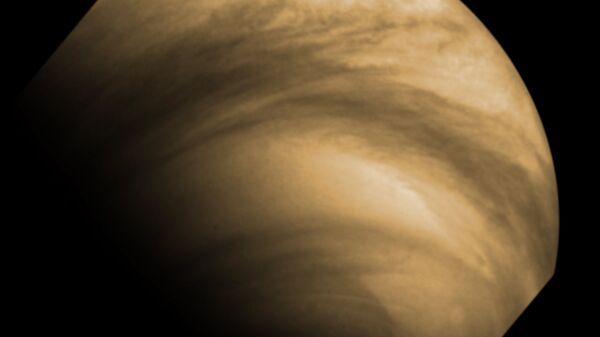A recent DLR study focused on the 200-kilometer Idunn Mons volcano in Venus’s southern hemisphere. The planet's permanent cloud cover makes it difficult to see what is happening on its surface, so DLR researchers used high-resolution radar images from NASA’s early 1990s Magellan mission to Venus, plus data from the European Space Agency's (ESA) 2006-2014 Venus Express mission, which mapped the southern hemisphere of Venus using the near infrared range, to create a new numerical model to simulate the volcano’s lava flows, Space.com explained. By combining the datasets, they were able to model that part of Earth's "twin sister" much more clearly.
"We could identify and map distinctive lava flows from the top and eastern flank of the volcano, which might have been recently active in terms of geologic time," said DLR planetary researcher Piero D'Incecco on the center’s website.
D'Incecco presented his organization’s results at the October 16-21 ongoing joint meeting of American Astronomical Society's Division for Planetary Sciences (DPS) and the European Planetary Science Congress in Pasadena, California.
"This is particularly important because this is the first time we can map, with such a high resolution, lava flows from a volcanic structure which is believed to be recently or still active on a terrestrial body other than Earth," he said, according to Space.com.
Their modeling found that the flank lava flows were responsible for the hotspot.
The Idunn Mons volcano rises some 1.6 miles above the surrounding plains. In 2010, the Venus Express probe detected high levels of infrared light coming from the volcano, indicating that the area is still warm – perhaps from recent lava flows. Since then, scientists have been looking for more evidence of ongoing volcanic activity.
Venus today has an atmosphere filled with carbon dioxide and surface temperatures that reach higher than 850 degrees Fahrenheit. But scientists believe that Venus is made of the same stuff as Earth, and might once have had cool oceans and been able to support life. Understanding how Venus evolved may give scientists clues about the future of the blue planet.




